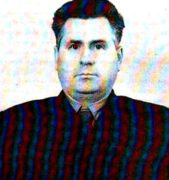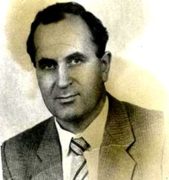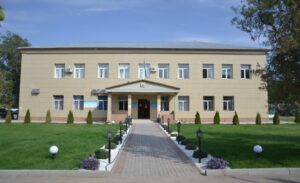The history of the establishing of the institute goes back to the end of the 50s of the last century and includes two stages in its formation and development. The so-called “Soviet” stage beginning from 1956 to 1991 and the modern period from 1992.
Research Institute of Agriculture (RIAC) of the Ministry of Agriculture of USSR was established by the Decree of the Central Committee of the CPSU and the Council of Ministers of the USSR of August 7, 1958 and the order of the Minister of Agriculture of the USSR V. Matskevich No. 253 of September 18, 1958 on the basis of two laboratories – Research and Experimental Sstation of All-Union Institute of Plant Protection and the Veterinary Research Laboratory of the USSR Ministry of Agriculture.
The main prerequisite for the creation of RIAC was the need to protect the southern borders of the USSR, in particular, the regions of Central Asia and Kazakhstan from particularly dangerous infectious diseases of agricultural and wild animals that could be brought from neighboring countries.
 |
The history of organization of the RIAC factually begins with order No. 1 of September 6, 1957, when the candidate of veterinary sciences Madatov Ruben Ivanovich was appointed the acting director of the Veterinary Research Laboratory, who the next year became the first director of the RIAC.
In this position Madatov R.I. worked a small (1958-1960), but an important period of laying and construction of laboratory buildings of the institute and residential town. |
In subsequent years, the team of the Research Institute of Agriculture was headed by experienced scientists Stepan Trofimovich Ryagin, colonel, doctor of veterinary sciences, professor (1960-1964), Alexander Nikolayevich Burdov, doctor of veterinary sciences, professor (1964-1972), Alexander Semenovich Grinin, doctor of veterinary sciences, professor (1972-1977), Feudor Petrovich Kurchenko, doctor of veterinary sciences, professor (1977-1988), Anatoliy Alekseyevich Gusev, doctor of veterinary sciences, professor (1988-1992), Seydigapbar Mamadaliyevich Mamadaliyev, doctor of veterinary sciences, professor (1992-2010 years), Abylay Rysbayuly Sansyzbay, doctor of veterinary sciences, professor, corresponding member of National Academy of Sciences, academician of Academy of Agricultural Sciences of RK (2010-2018 years), Zakarya Kunsulu Daltonovna, Doctor of Biological Sciences, Professor, Academician of AEN (2018-2022), Abdurayimov Yergali Orynbasarovich, Doctor of Veterinary Sciences, Professor (2022-2023). Since October 04, 2023, by Order No. 56 of the Minister of Health of the Republic of Kazakhstan, Kerimbayev Aslan Amangeldiyevich has been appointed Director General.
From the first days of scientific activity, the scientific team was involved in solving complex problems, both in the field of veterinary virology and agricultural phytopathology. The focus of research work has made it necessary to form target laboratories and the creation of veterinary (sector “V”) and plant-cultivation (sector “R”).

The initial period of work of the RIAC personnel was associated with difficulties in the engineering personnel integration, insufficient equipment and reagents, housing shortages. In subsequent years, the construction of housing rapidly increased, and it was completed by 1966 in fact. In addition to housing, a polyclinic, a kindergarten, a school, a cultural center, shops, a post office and a boiler station were built in the town. In essence, an entire scientific campus with social infrastructure, as well as an institution that meets all the biological safety requirements of that time was created. The territory of the institute was provided with 24 hour guarding by a separate division of the USSR Ministry of Internal Affairs. Then, in the beginning of the 1970s, active redeployment of military units from other republics to a town began, which led to the transfer of control and life support of the village to the jurisdiction of the Ministry of Defense of USSR, and then the Republic of Kazakhstan.
Structurally, the RIAC was a completely autonomous organization capable of independently performing all the functions assigned to it. In order to provide highly qualified scientific personnel, young specialists from leading universities of the USSR were purposefully and systematically sent to RIAC. These were mainly graduates of the Moscow Veterinary Academy, Voronezh University, Kazakh State University named after S.M. Kirov, Almaty Zoo-Veterinary Institute, as well as specialists from other research institutes of the USSR.
The first employed to the institute (1958) were Afanasyev Peter Dmitriyevich, Lukyanova Zinaida Mikhaylovna as junior researchers, and Litvinova Vera Panteleimonovna, Karaseva Evdokiya Mikhailovna as senior laboratory assistants, Karasev Vladimir Petrovich as doctor-laboratory assistant. In 1959 Kiryukhin Rudolf Abramovich, Anufriev Alexander Ivanovich, Degtyarenko Nina Leonidovna, Kekukh Ivan Grigorievich, Kekukh Vera Grigoryevna, Pavlov Nikolai Ivanovich, Pavlova Larisa Ivanovna arrived to work at the RIAC. In 1960, Handuyev Tsyren Cybekzhapovich was sent to RIAC, who headed one of the laboratories, and then became deputy director for scientific work. In 1961 a group of specialists arrived from Moscow universities Ivanyushchenkov Vladimir Nikiforovich, Ivanyushchenkova Inga Vasilyevna, Figura (Bykova) Lina Aleksandrovna, Bashayev Vyacheslav Vasilyevich, who later made a significant contribution to the scientific achievements of the institute. From Kazakhstani universities in the RIAC were invited graduates of the Faculty of Biology of the Kazakh State University, Zaitsev Valentin Lukyanovich in 1964 and Titov Igor Nikolayevich in 1965.

Until 1992, the institute was part of the USSR Ministry of Agriculture. The fall of the Soviet Union and the outflow of scientific personnel made their own adjustments to the activities of the RIAC and initiated the second stage of the development of the institute. New realities and a change in the direction of research set new tasks for the scientists of the institute.
After the fall of the Soviet Union, the institute was reassigned to the Main Veterinary Department of the Ministry of Agriculture of the Republic of Kazakhstan, and since 1993 has been included in the National Center for Biotechnology of the Ministry of Science and New Technologies of the Republic of Kazakhstan. Since 1999, he was subordinate to the Ministry of Energy, Industry and Trade of the Republic of Kazakhstan, and since 2001, he has been subordinated to the Ministry of Education and Science of the Republic of Kazakhstan (MES RK). On August 7, 2006, it was renamed the Research Institute of Biological Safety Problems (RIBSP) and received the status of a subsidiary state enterprise of the National Center for Biotechnology (NCB) of the MES RK.
The history of the formation and development of RIBSP (a former RIAC) as a scientific virological institution is associated with the names of prominent scientists in the field of veterinary virology, veterinary medicine, biotechnology and biology. A great contribution to the establishment, formation and development of the institute was made by prominent scientists and organizers of science as V.I. Ogarkov, A.A. Vorobyev, I.A. Bakulov, as well as Honored Scientists Syurin V.N., Doctor of veterinary sciences, professor; Khudyakov M.A., Chief of the Main Department of the Scientific-Research and Experimental-Production Institutions of USSR; Ryagin S.T., Doctor of veterinary sciences, professor; Handuev TS.TS., Doctor of veterinary sciences, professor, Corresponding member of Kyrgyz National Academy of Sciences; Burdov A.N., Doctor of veterinary sciences, professor; Grinin A.S., Doctor of veterinary sciences, professor; Kurchenko F.P., Doctor of veterinary sciences, professor; Anufriev A.I., Doctor of veterinary sciences, professor; Ivanyushchenkov V.N., Doctor of veterinary sciences, professor; Gusev A.A., Doctor of veterinary sciences, professor; Mamadaliev S.M., Doctor of veterinary sciences, professor; amd Candidates of Sciences Shurygin A.I., Afanasev P.D., Kiryukhin R.A., Bashayev V.V., Gononov Yu.M., Zaytsev V.L., Troitskiy E.N., Khairullin B.M., Mambetaliev M.A.
Until 1992, the RIAC was an integral part of the allied research complex within the USSR Ministry of Agriculture, which carried out programs for studying pathogens, developing tools and diagnostic methods, and specifically preventing particularly dangerous viral infections.
Currently, the institute is one of the largest scientific centers of the republic in the field of veterinary virology, immunology, molecular biology, mycology, phytopathology and biological safety, which has an experimental basis for conducting research on the creation of a new generation of biological preparations using genetic engineering and biotechnology. In the institute, research on the development of cell biotechnology, allowing you to create therapeutic and therapeutic drugs for medical purposes are conducted.
According to the Government’s decree, since 2000 the institute has the status of a protected object in the Republic of Kazakhstan.
Currently, the structure of the Institute consists of 13 research laboratories, auxiliary technological, scientific and informational, engineering and technical and administrative departments. The Institute employs specialists in medical and veterinary virology, biological safety, epizootology, immunology, molecular biology, genetic engineering, biochemistry, biotechnology, microbiology and phytopathology.

The structure of the institute includes research laboratories and technological, scientifically informational, engineering and administrative and supply departments. The institute employs specialists in medical and veterinary virology, biological safety, epizootiology, immunology, molecular biology, biochemistry, biotechnology, microbiology, and phytopathology. During the period of operation of the institute, more than 140 highly qualified specialists were trained, of which 20 are doctors and 132 – candidates of science.
Under the general leadership of the akim of Zhambyl region, a patronymic biopharmaceutical plant for the production of vaccines was built in accordance with the GMP standard, as well as a 180-apartment residential complex for scientists of the institute.








